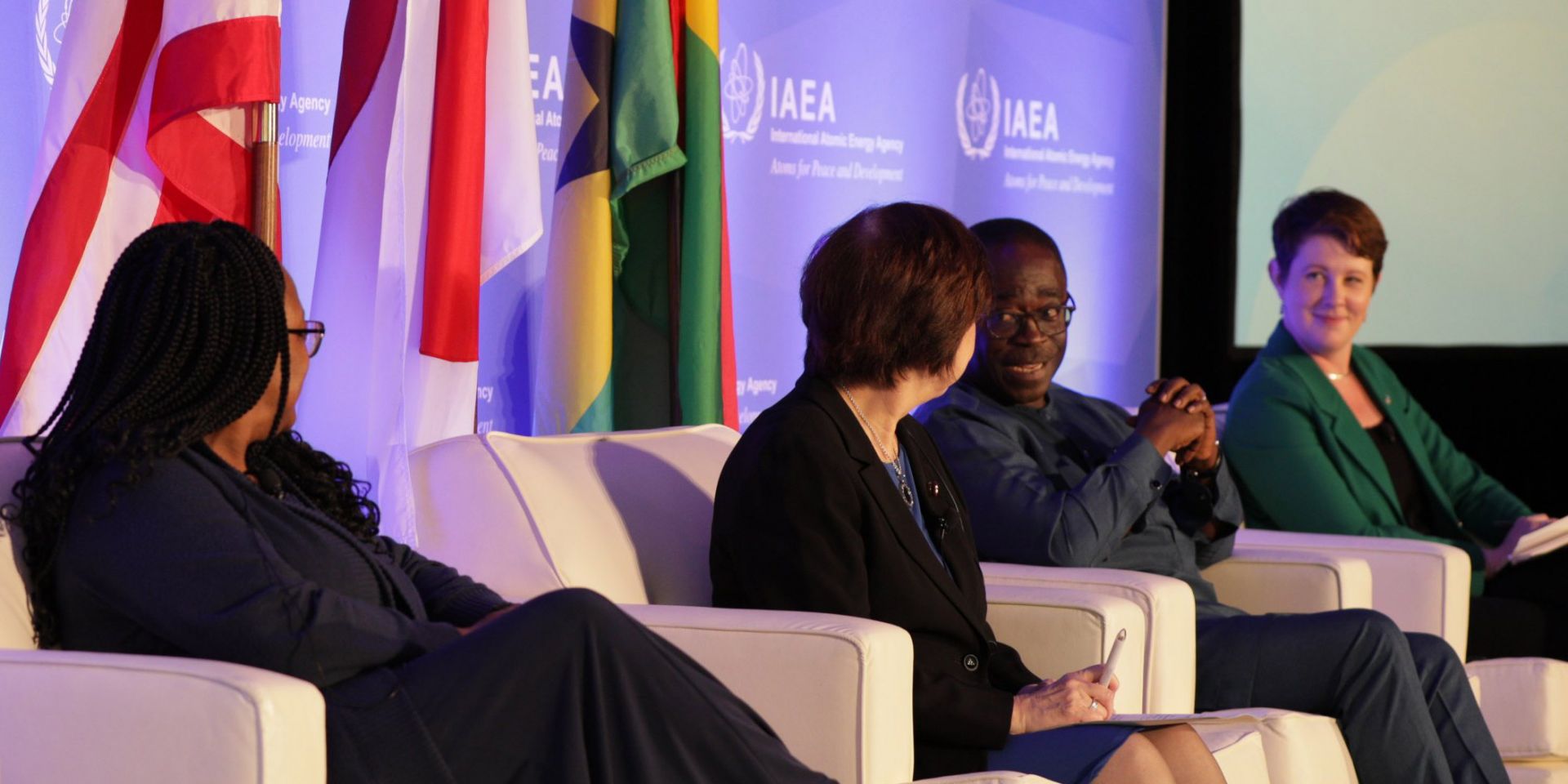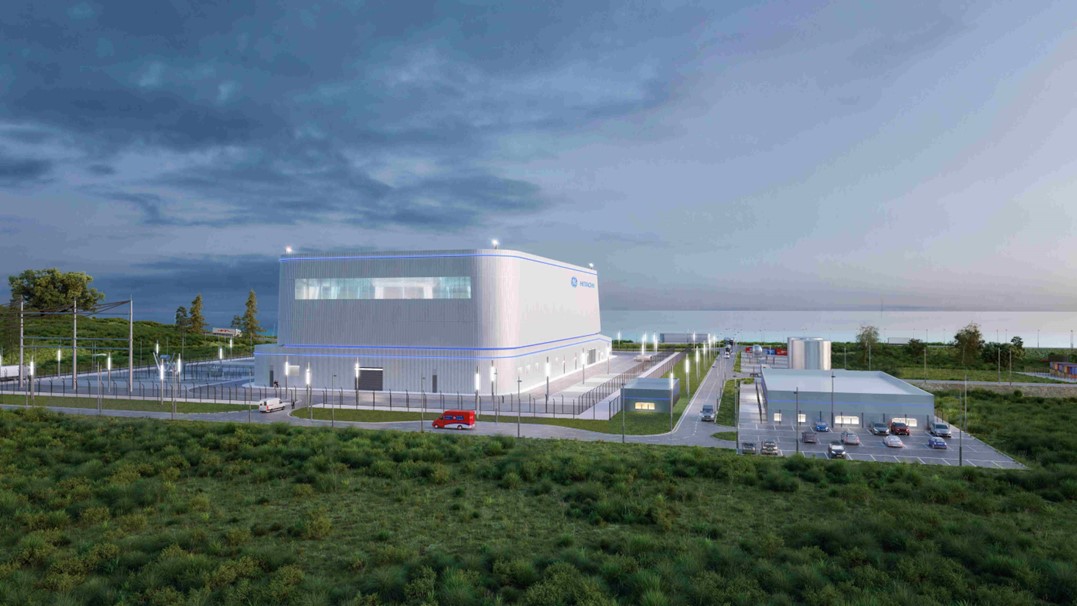Philippine president Ferdinand R. Marcos Jr. and Vice President Harris meet in Manila on November 21. (Photo: Office of the Press Secretary, Republic of the Philippines)
During a recent weeklong trip to Southeast Asia aimed at bolstering U.S. economic and security ties in the region, Vice President Kamala Harris announced the launch of nuclear energy partnerships with Thailand and the Philippines.
Currently, neither country enjoys the benefits of nuclear power. Both rely primarily on some mix of petroleum, natural gas, and coal for their energy needs.

Jigar Shah
The Biden-Harris administration has committed to decarbonizing the power sector by 2035 and the economy by 2050, while creating good jobs and promoting equity. There’s no question that the lowest-cost, most reliable grid of the future will require clean, firm baseload power to support intermittent renewable energy.
Nuclear is such a reliable source of firm, flexible baseload power for the grid. Energy mix optimization models show that as penetration of renewables (such as solar and wind) grows, required energy storage capacity also grows, leading to increasing cost competitiveness of dispatchable carbon-free power sources (including low-impact hydro, geothermal energy, carbon capture and storage, zero-carbon fuels like hydrogen, and nuclear). Nuclear power is an essential component of America’s transition to a clean electric grid to maintain reliability, resiliency, and affordability.
U.S. special envoy for climate John Kerry at COP27. (Photo: Embassy of Ukraine in the United States of America)
U.S. special envoy for climate John Kerry and Ukraine’s minister of energy German Galushchenko have announced a two-to-three-year pilot project aimed at demonstrating the commercial-scale production of clean hydrogen and ammonia from small modular reactors in Ukraine using solid oxide electrolysis.
The Canadian government last week released its 2022 Fall Economic Statement, featuring, among its many proposals, investment tax credits for a variety of clean energy technologies, including small modular reactors.
November 11, 2022, 7:04AMANS NewsGrace Stanke 
Stanke
Being Miss Wisconsin has provided me with some unique experiences. I’ve met with community members from recognizable Wisconsin cities like Madison and Milwaukee, but I’ve also met individuals from smaller communities that might not be familiar to most readers—like Kendall, and Nekoosa. This connection with places and people across the state is expected in my role. It didn’t surprise me, and it is one of my favorite aspects of this position.
Through my partnership with the American Nuclear Society, I have had the opportunity to see some incredible facilities in Wisconsin. I first saw two fusion research labs, and created a two-part video on fusion that can be seen on the Miss Wisconsin 2022 and ANS Instagram accounts. It has sparked several conversations at my various appearances—including at those small towns. Hearing people talk about nuclear science and the potential it holds truly fills my soul.
ANS's “Powering Our Future: The Coal to Nuclear Opportunity” panel discussion featured (top left, clockwise) Jessica Lovering, Patrick Burke, Kenya Stump, Andrew Griffith, Christine King, and Carol Lane. (ANS screenshot)
Since at least June of last year—when TerraPower and PacifiCorp announced plans to site the Natrium reactor demonstration project at one of Wyoming’s retiring coal plants—the concept of repurposing those plants to host nuclear reactors has been a popular topic of conversation among the energy cognoscenti.
From left: U.S. undersecretary of state for arms control and international security Bonnie Jenkins; Japan’s state minister of economy, trade, and industry Fusae Ōta; Ghana’s deputy minister of Energy William Owuraku Aidoo; and U.S. assistant secretary for nuclear energy Kathryn Huff. (Photo: DOE Office of Nuclear Energy)
The United States and Japan have announced Winning an Edge Through Cooperation in Advanced Nuclear (WECAN)—a new agreement aimed at supporting the deployment of small modular reactors and other advanced reactor technologies in partner countries.
Conceptual layout and deployment of a Prodigy SMR Marine Power Station with 12 NuScale Power Modules. (Graphic: Business Wire)
NuScale Power and Prodigy Clean Energy announced on October 26 that they have developed a conceptual design for a transportable, marine-based small modular reactor. The companies plan to present the design to utilities, regulators, and shipyard manufacturers. Prodigy, a Canadian company “specializing in the development of transportable nuclear power plants,” and NuScale signed a memorandum of understanding in 2018 agreeing to pursue the development of an SMR marine facility.
Artist’s rendering of a BWRX-300 plant. (Image: GE Hitachi Nuclear Energy)
Canada Infrastructure Bank (CIB) has finalized an agreement with Ontario Power Generation, committing C$970 million (about $715 million) to Canada’s first small modular reactor, to be located at OPG’s Darlington nuclear power plant in Clarington, Ontario.
A state-owned enterprise founded in 2017, CIB is charged with financially supporting revenue-generating infrastructure projects in the public interest via public-private partnerships. The agreement with OPG is the bank’s largest investment in clean power to date, according to a Tuesday joint announcement.
Finnish energy company Fortum has announced the launch of a two-year feasibility study to explore the potential for new nuclear construction, with a focus on Finland and neighboring Sweden. The utility said it will examine commercial, technological, and societal conditions for both conventional large reactors and small modular reactors.
Virginia Gov. Glenn Youngkin announces a $10 million energy innovation investment in Virginia. (Photo: Christian Martinez/Office of the Governor)
Some two weeks after unveiling his state’s 2022 Energy Plan, Virginia Gov. Glenn Youngkin has announced his intention to include $10 million in the state’s next budget proposal—due in December—to create the Virginia Power Innovation Fund for research and development of nuclear, hydrogen, carbon capture and utilization, and battery storage technologies.
From left: Czech Republic deputy minister of industry and trade Petr Třešňák, ČEZ’s Tomáš Pleskač, OPG’s Ken Hartwick, Ontario minister of energy Todd Smith, and Canadian ambassador to the Czech Republic Ayesha Patricia Rekhi. (Photo: CNW Group/Ontario Power Generation)
Canada’s Ontario Power Generation (OPG) and Czech Republic–based ČEZ have agreed to collaborate on nuclear technology deployment, including small modular reactors, under a memorandum of understanding signed yesterday in Prague.
Ontario’s largest electricity generator and the European energy giant have both pledged to achieve net-zero carbon emissions by 2040.
From left: Romanian energy minister Virgil Popescu; E-Infra CEO Teofil Mureșan; Nuclearelectrica board chairman Teodor Chirica; and U.S. undersecretary for economic development, energy, and environment Jose Fernandez. (Photo: Nuclearelectrica)
Energy firms Nuclearelectrica and Nova Power & Gas have launched a joint venture, RoPower Nuclear, for the development of small modular reactors in Romania, with SMR technology provided by NuScale Power, of Portland, Ore.
Largely state-owned, Nuclearelectrica operates Romania’s sole nuclear power facility, the two-unit Cernavoda plant, while Nova Power & Gas, a subsidiary of the privately held E-Infra Group, is a supplier and distributor of electricity and natural gas in Romania. The two firms own equal shares of RoPower.
Ontario Power Generation and Microsoft Canada have formed a partnership aimed at combatting climate change and driving sustainable growth across the province of Ontario, the Canadian utility announced this week.
Under the partnership, Microsoft will procure clean energy credits (CECs) sourced from OPG’s nuclear and hydro assets in Ontario on an hourly basis. (OPG’s nuclear assets include the four-unit Darlington plant and six-unit Pickering facility.) According to the announcement, this will enable Microsoft to advance toward its 100/100/0 by 2030 goal, which commits the software firm to powering its data centers globally with zero-carbon energy, 24/7.
The Estevan region (Image: SaskPower)
As part of its planning and regulatory activities to potentially build small modular reactors (SMRs) in currently nuclear-powerless Saskatchewan, Canadian utility SaskPower has selected the province’s Estevan and Elbow regions for further study. (In 2018, SaskPower joined the Canadian government, three other provinces, and four other Canadian utilities to participate in the development of A Call to Action: A Canadian Roadmap for Small Modular Reactors.)
Members of the Paragon Energy Solutions, Reuter-Stokes, and NuScale Power teams during a recent visit to Reuter-Stokes’ global headquarters in Twinsburg, Ohio. (Photo: Reuter-Stokes)
Paragon Energy Solutions and Reuter-Stokes have signed a contract to design and manufacture neutron monitoring detectors for small modular reactor developer NuScale Power.
From left: NuScale president and CEO John Hopkins, Poland prime minister Mateusz Morawiecki, KGHM CEO Marcin Chludziński, and Ludwik Pieńkowski from AGH University of Science and Technology view a model of NuScale’s SMR technology. (Photo: Business Wire)
Portland, Ore.–based NuScale Power and KGHM Polska Miedź S.A. have signed the first task order and a statement of commencement to begin work under an agreement signed in February to initiate deployment in Poland of NuScale’s small modular reactor technology, the American firm announced this week. The task order was inked September 7 at the 31st Economic Forum, held September 6–8 in Karpacz, Poland.
Artistic rendering of a Rolls-Royce SMR plant. (Image: Rolls-Royce)
Just one week after entering into an exclusive agreement with a Dutch nuclear development company to deploy small modular reactors in the Netherlands, U.K.-based Rolls-Royce SMR has announced the signing of a memorandum of understanding with Škoda JS to explore “areas of collaboration” for SMR deployment in both the Czech Republic and elsewhere in Central Europe.
From left: Bas Sujis (ULC-Energy), Sophie Macfarlane-Smith (Rolls-Royce SMR), Joanna Roper CMG (U.K. ambassador to the Netherlands), Alan Woods (Rolls-Royce SMR), and Dirk Rabelink (ULC-Energy). (Photo: Rolls-Royce SMR)
The United Kingdom’s Rolls-Royce SMR has signed an exclusive agreement with ULC-Energy—a Dutch nuclear development company established in 2021—to deploy small modular reactor stations in the Netherlands. (ULC stands for Ultra Low Carbon.)
Artistic rendering of a NuScale nuclear power plant. (Image: NuScale Power)
NuScale Power yesterday announced the signing of a memorandum of understanding with Estonia’s Fermi Energia, a company focused on small modular reactor development to address the Baltic state’s climate and energy security goals.
Under the MOU, Fermi Energia will evaluate the Portland, Ore. – based firm’s small modular reactor design for deployment in Estonia. (There are no nuclear power facilities in Estonia or in the other Baltic countries, Latvia and Lithuania.)


















